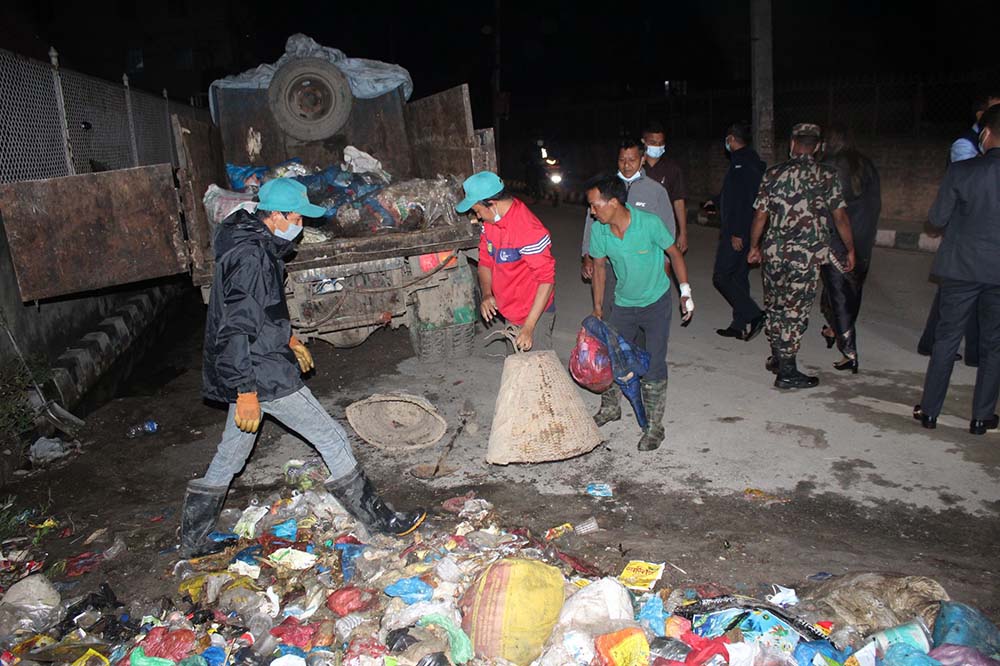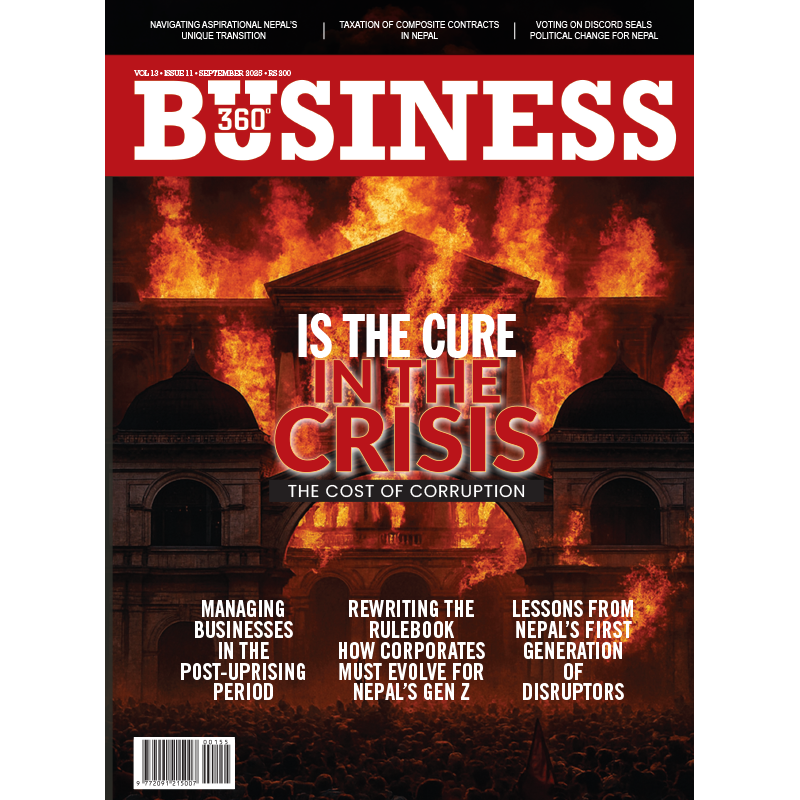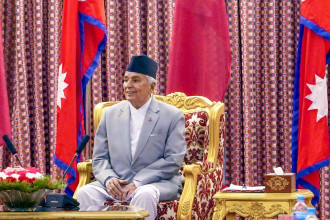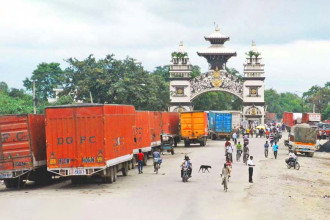
KATHMANDU: Solid waste management in Kathmandu valley has been a perennial and pressing problem without a sustainable solution yet.
It seems living with waste piled everywhere in the streets has been a routine life for the residents of the valley with garbage often waiting for its collection and disposal for days. Health risks posed by unmanaged waste have been a major concern while people passing by heaps of waste in the valley's streets have been affected. Furthermore, unmanaged solid waste has degraded the beauty of the Valley.
However, election of Balendra Shah to the mayoral post in the Kathmandu Metropolitan City (KMC) through the recently held local election has instilled hopes. The main election agenda of Shah, who won as an independent candidate, was to find a sustainable solution to waste management in the Valley. People pin their hopes on Shah who has won independently driven by his passion and energetic character. Time will tell how far he will be able to deliver.
But, Shah's efforts are ongoing. After being elected as KMC mayor, Shah reached out to the residents of Sisdole and Bancharedanda where the valley's waste was being dumped for years and inquired about their problems caused by the dumped waste. He is also figuring out what possible alternatives are out there to the problem.
As part of his plan to manage waste, KMC Mayor has come up with the slogan 'rupee from rubbish' by classifying biodegradable and non-biodegradable waste produced from the valley. The KMC has already asked residents of the valley to segregate waste at the source of its origin as biodegradable and non-biodegradable. Waste segregation has come into effect from July 17 and at all 32 wards of the KMC. Efforts are on for the same in other local levels — Lalitpur and Bhaktapur — of the valley, it has been said. The KMC has led the collection and disposal of waste produced from the Valley.
As per the schedule, biodegradable waste is picked up at the source of its origin on Sundays and Wednesdays and non-biodegradable on Mondays and Fridays. A person defying the waste segregation is fined Rs 500.
However, challenges remain ahead, especially in the management of segregated waste.
Preparations are underway to dump the segregated waste collected from the valley separately at a landfill site, Bancharedanda, for some time, says waste expert engineer Sunil Lamsal.
Problems remain the same by dumping separated waste in the same place at a time when residents of the dumping site, Bancharedanda are seeking alternatives and there is a demand to reuse it at the source of its origin, according to local people.
The KMC has identified five places in Kathmandu to dispose of waste. After three months, hazardous garbage will not be dumped at Bancharedanda, says the KMC.
The metropolis has come up with a plan to reuse biodegradable waste produced from the Valley as organic fertilisers.
Waste segregation and reuse
Experts have suggested some solutions like reducing the volume of waste at the sources of its origin along with its segregation, adoption of the zero waste concept and the use of modern technology to manage garbage.
Residents of Sisdol and Bancharedanda have been protesting, many times causing a halt in garbage dump, stating that they have been badly affected by dumped solid waste. Besides being exposed to health issues, they have complained about issues like a drop in the quality of their agricultural products and the disease to their livestock caused by leachate from solid waste.
Recently, the KMC struck an 18-point agreement with the locals of Sisdole and Bancharedanda following their protest, thus allowing the disposal of garbage from the Valley.
The KMC has been in collaboration with the private sector to pick up garbage from the valley. However, the private sector has been often accused of being irresponsible to citizens. They have also been charged with charging the locals of money for collecting waste.
The KMC has now warned of taking action against the private sector for their irresponsibility.
The metropolis has unofficially reached an agreement with various 32 private companies to pick up garbage from the valley. Lack of an agreement in writing with them has created problems, it has been said.
Experts however believe that waste segregation is not a final solution. But it will help decrease the volume of biodegradable waste, they view.
Environment expert Prakash Amatya has suggested the disposal of segregated waste separately. A permanent way should be sought to manage garbage collected from the valley within, he is of the view. "For this, the local level should focus on reusing waste. 40% of waste produced from the Valley can be managed." Arrangements should be made for each ward to purchase reusable garbage.
Kathmandu valley produces 1,200 metric tonnes of garbage on a daily basis. Of it, the KMC accounts for 500 metric tonnes.
At least 200 trucks laden with waste from the valley ferry waste on a daily basis. But, during monsoon, ferrying waste becomes troublesome due to broken roads leading to the dumping sites.
As a result of the damaged roads, at present, only 100 trucks laden with garbage have made it to Bancharedanda to dispose of waste.
For managing waste, other local levels of the valley are required to provide land and the KMC the budget to construct new landfill sites as an alternative, according to the KMC's preliminary plan. Identifying the lands for the same is underway, said the KMC.
General Secretary of the Solid Waste Management Association of Nepal (SWMAN), Nepal Mitra Ghimire and Chairperson of the NGO Federation for Environmental Conservation, Nepal Tikaram Dahal have pledged to cooperate with the KMC's plan, policies and programmes in managing valley's waste.
Of garbage produced from the Valley, around 60% could be managed at home, according to a study. Such waste can be decomposed in home gardens, experts suggest.
Mayor Shah is at work managing solid waste in the valley. He has proposed cooperation with various sectors for the same. Experts have suggested turning biodegradable waste into organic fertiliser as the best option than reusing it to produce gas or electricity.
The KMC has been spending its budget on waste management, but without desired results, this should be focused, said KMC Deputy Mayor Sunita Dangol.
The KMC has been dumping waste produced from the Valley at Sisdol in Kakani Rural Municipality-2 in Nuwakot since 2062 BS with the assistance of the Japan International Cooperation Agency (JICA). The areas spanning 432 ropanis of land at Sisdol have been used for dumping waste from the valley.
Similarly, 1,792 ropanis of land have been managed at Bancharedanda to dump waste from the Valley.
However, these areas have not served as a permanent solution as local people have been protesting time and again, putting forth various demands.
By RSS
READ ALSO:
- Chandragiri Municipality pledges to collaborate with KMC on waste management
- Waste management in Kathmandu to be affected for two days
- Wastes to be transported to landfill site at nighttime only
- KMC brings call centre into operation
- World Environment Day: Garbage piles feeding to river pollution in federal capital
- Govt committed to addressing Bancharedanda local’s concern: Urban Minister
Published Date: July 19, 2022, 12:00 am
Post Comment
E-Magazine
RELATED B360 National





